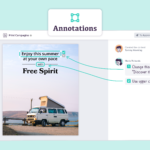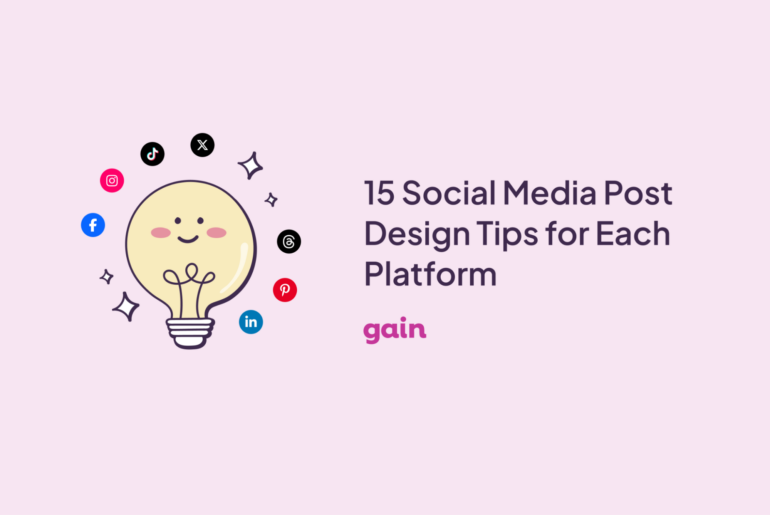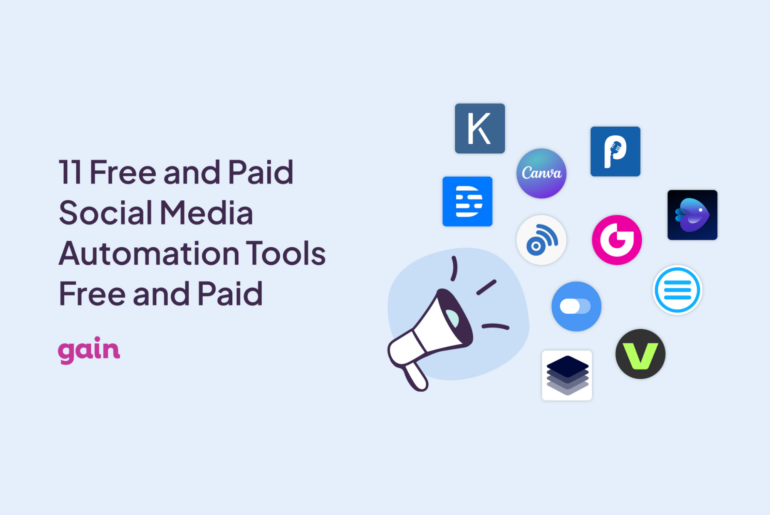Now that so many companies have had to switch operations to remote working, streamlining your workflow has become even more important. One of the most efficient ways to streamline is automating as many tasks as possible.
Automation can help overcome many of the challenges remote working presents. It reduces repetitive workloads and the time saved can be used more productively. It channels processes to minimize miscommunication and keep everyone on the same page. Automation can even help you retain customers and grow your business.

We spoke to several digital agency leaders to find out how they approach automation and what role it plays in their daily operations. Here are their secrets to automation success!
The rewards of automation
Companies that prioritize automating their workflows see big returns almost immediately. The team at Cubatica uses a variety of tools to automate workflow and improve efficiency. Josh Bretag, Founder and CEO of Cubatica, recently shared with us how much the team benefited from implementing the online project management tool ClickUp: “Using it, we’ve reduced project management workloads by approximately 50%. This means we spend less time worrying about the small stuff, and have more time and energy to devote to getting our clients exceptional results and improving their ROI.”
By reducing their project management workload, the Cubatica team is able to spend the majority of their time reviewing accounts, coming up with new ideas to increase conversions, and communicating with clients and partners. “Everything else, we systematically and aggressively reduce the time we spend on so we can better leverage our highest-value activities”, added Bretag.
Gain’s Customer Success Manager, Deborah Ramirez, shared with us some additional benefits of automation that she’s observed with our agency clients. “A streamlined workflow also benefits team dynamics, offering more accountability to everyone involved and allowing everyone to be on the same page. Plus, it has a huge impact on how the client perceives the agency. Offering clients transparency and using technology that saves them time and money helps solidify the relationship.”
Gina Ramsey, President of Pink Dog Digital, described the amount of automation in her team’s processes as significant. “We have task templates that we use to automate our processes. Everything is documented and everyone knows where they are in the process. As one team member completes a task the next team member is alerted to their next task. It is virtually seamless.”
On the other hand, Jacob Mann, Owner and Marketing Manager at Seaworthy Strategy, described the very real consequences of not automating as a snowball effect. “It can definitely be pretty time consuming when a process-driven agency hasn’t automated its processes. The snowball effect is very real and can be a huge time-waster.” He then shared with us the type of process that the team at Seaworthy has successfully automated. “We really lean heavily on automation when it comes to things like onboarding, meeting scheduling, and other task-based stuff. Automation definitely helps those processes.”
The biggest time-sucks for agencies and marketing teams
Project management
Most of the industry people we talk to agree that project management is the most-time consuming activity. That’s a problem. We interviewed Alex Zachman, CEO and CCO of Old North Collective, and he explained it this way: “When you let projects run your team, you’re always putting fires out and you never have time to actually get ahead.”
Client feedback and approvals
Communicating the creative process to clients or stakeholders can be difficult. Add to this the learning curve of different tools and different processes to give feedback and approve content for different marketing efforts created by different teams, and it can quickly become overwhelming. “We already work in a complicated field, so if we can simplify the amount of tools for the client, that’ll make the revision process smoother”, said Zachman.
For Pat Ahern, Partner at Junto, the client approval process is at the top of the list. According to Ahern, not only does waiting for client approval take precious time, it can also strain the agency-client relationship. “It can be awkward. Some clients are better than others at getting back to us. Sometimes a lot of follow-up is needed”, explained Ahern. “Also, there’s a lot of potential for things getting overlooked because some clients share feedback in comments, others in different color text, others in email, others in Slack, etc…”
Fixing communication issues
Not having specific channels designated for the different types of communication that need to happen between teams and clients can lead to misunderstandings and time wasted. The team at Old North Collective is living proof. “Before we streamlined, we were letting each client drive how they wanted to communicate with us, whether it be emails or video calls. We quickly realized how inefficient this was, and how many things got lost because we had disparate systems”, added Zachman.
For Zachman’s team, streamlining their workflow immediately freed up 40 hours a week–enough to hire a new team member! “As projects and workflows become more complicated, it’s not sustainable to deal with emails, spreadsheets and calendars”, he explained. “At one point, you have to ask yourself, how many steps do we actually need?”
Let’s automate everything!
Tempting, right? But the reality is that not everything can or should be automated. Gina Ramsey at Pink Dog Digital believes in automating processes, not communications. “I don’t like to automate communications with clients and prospects. I like to be able to customize my communication with people, versus canned communications.”
Pat Ahern at Junto agrees. “We only avoid automation if it’s obvious to the client. We try to keep automation behind the scenes, making everything feel fully manual and fully customizable for the client.”
But even when everyone we spoke to agreed the human touch is imperative for the agency-client relationship, we found that there are also ways to standardize and streamline client communications to keep them time-efficient. Matt Burke, CEO at ZillaMetrics, let us in on how their team solved their communication issues: by having an operational document that clearly outlines not only the tasks that need to be accomplished, but also when to update the client and how those updates should be done.
“We intentionally have a planned cadence of emails, phone calls, and Zoom calls that we schedule at specific times in the campaign. Talking to clients is just as much about building rapport and friendship as it is about reporting progress. Ignoring the human side of the business can cause churn. You can do really great work, but if your client does not understand what you are working on, it’s easy for them not to value you”, explained Burke. “We use Zoom calls to educate our clients and show them their data live (GA, Google Ads, etc…), so we can show them what we want them to see and make sure they understand what the numbers mean. We use CallRail for lead tracking, so we’re able to zero in on exactly what we are producing for them and tie it back to our marketing program.”
Automation and remote-working
We’ve seen how important it is to nurture agency-client relationships with the human touch. But at a time when most are working remotely, the human touch has surfaced as a new and important need for internal teams. Jacob Mann at Seaworthy Strategy shared with us his thoughts on how remote working has impacted internal communications and how his team has stepped up to the challenge.
“I think it’s forced people to really actively search for ways to connect and keep human interactions part of daily work. I’ve already seen the effects in companies that haven’t prioritized staying close and keeping relationships healthy. For us, we’ve really made an effort to turn what would have been phone calls into video chats, and to really push for facetime. It’s important, especially now.”
Getting started
So, how can you be sure that you’re automating the right tasks for your operation, and furthermore, that you’re doing it with the right tools? Like Bretag at Cubatica told us, “anything that requires “outside the box” thinking is generally best not automated–or at least, not entirely automated. Automation is best suited to reduce mental workload and reduce the amount of resources needed to complete a task.”
While there’s no one-size-fits-all solution, the Gain Team has put together a comprehensive resource to help you make these decisions wisely and navigate the most common issues that agencies and marketing teams encounter in their day-to-day.
Gain’s Guide to Streamlining Your Team’s Workflow is a free e-book the Gain Team wrote using our combined experience working in agencies, and the workflows we’ve seen work best throughout the years from Gain users. A lot of what we’ve learned we’ve previously discussed in this blog, so we’ve compiled all that valuable information in a simple guide you can share with your team and immediately put to use.
In this guide, you’ll find techniques to:
- Analyze where your team is spending the most time
- Choose the right tools to automate your process
- Replace email with more automated, collaborative, communication tools
- Get your team members on board
- Lead remote teams efficiently
- Keep your workforce motivated
Gain’s Guide to Streamlining Your Workflow is free to download here, no strings attached. Get your copy now and share the love! We really hope you find it useful. Oh, and feel free to share this link with your team, clients, and anyone you think can benefit from it!

If you need expert advice, the Gain team is here for you. We offer free, personalized workflow consultations. We’ll go over your current content or marketing process and apply our knowledge from working with agencies all over the world to help you identify opportunities to streamline. Click here to schedule a free consultation.






